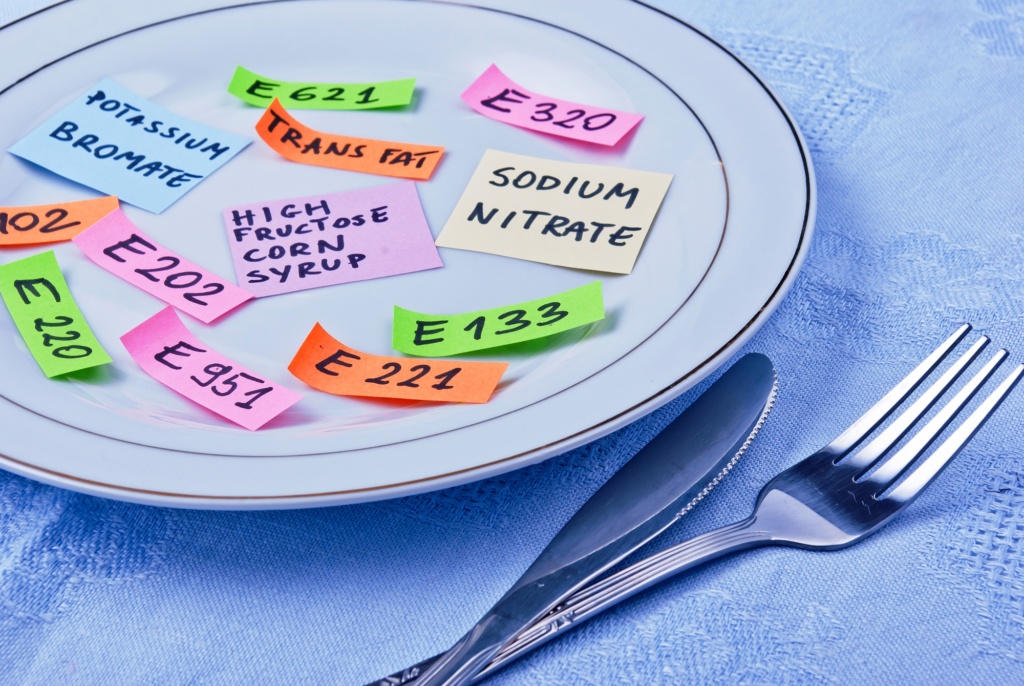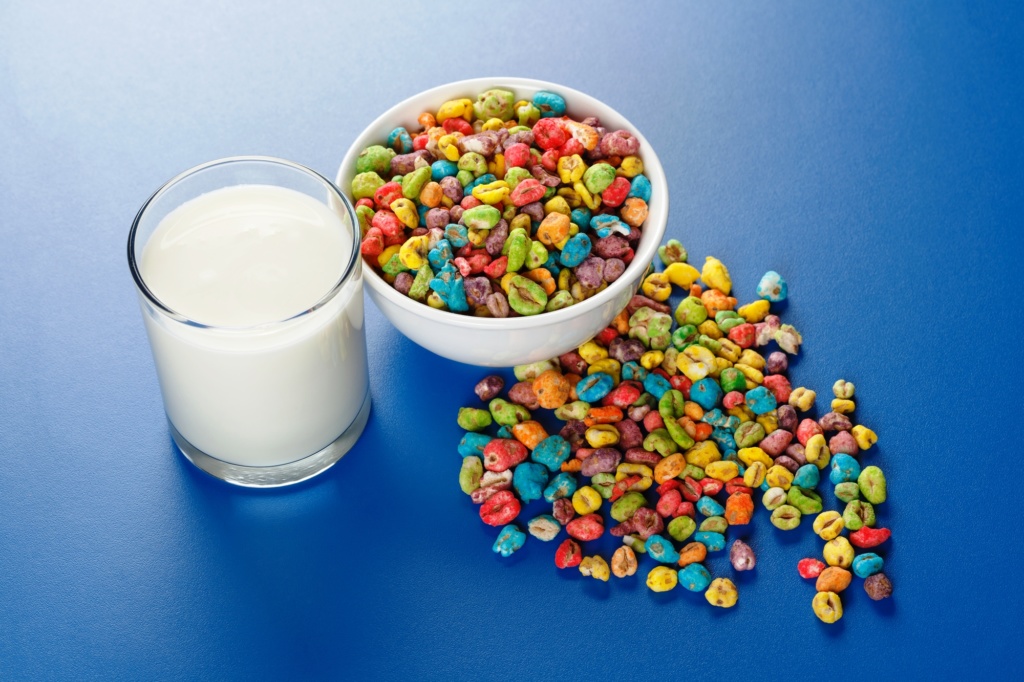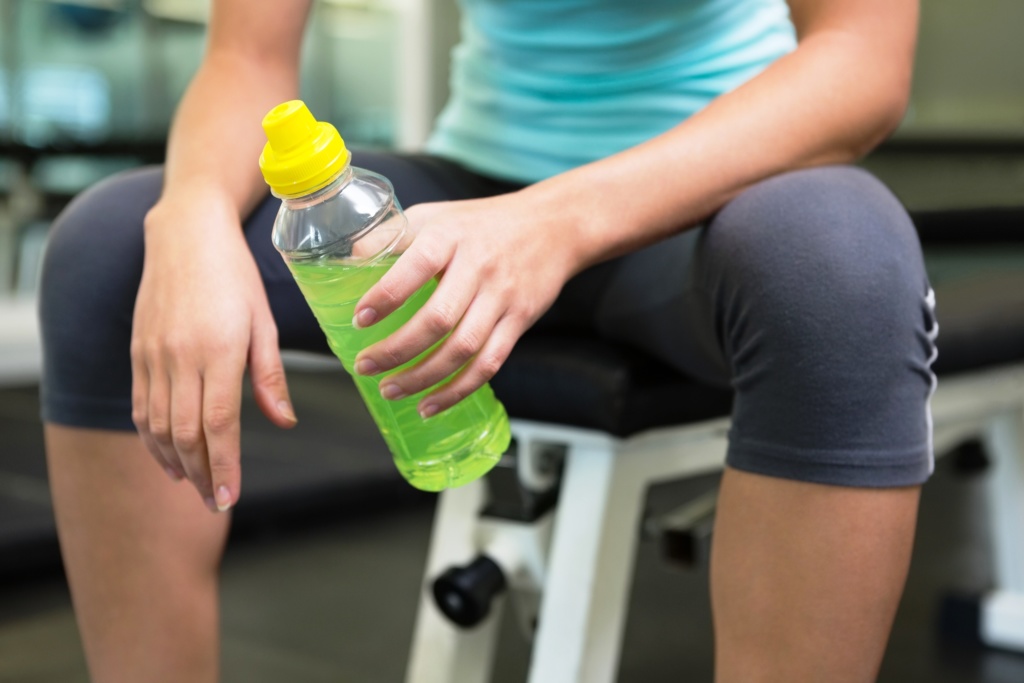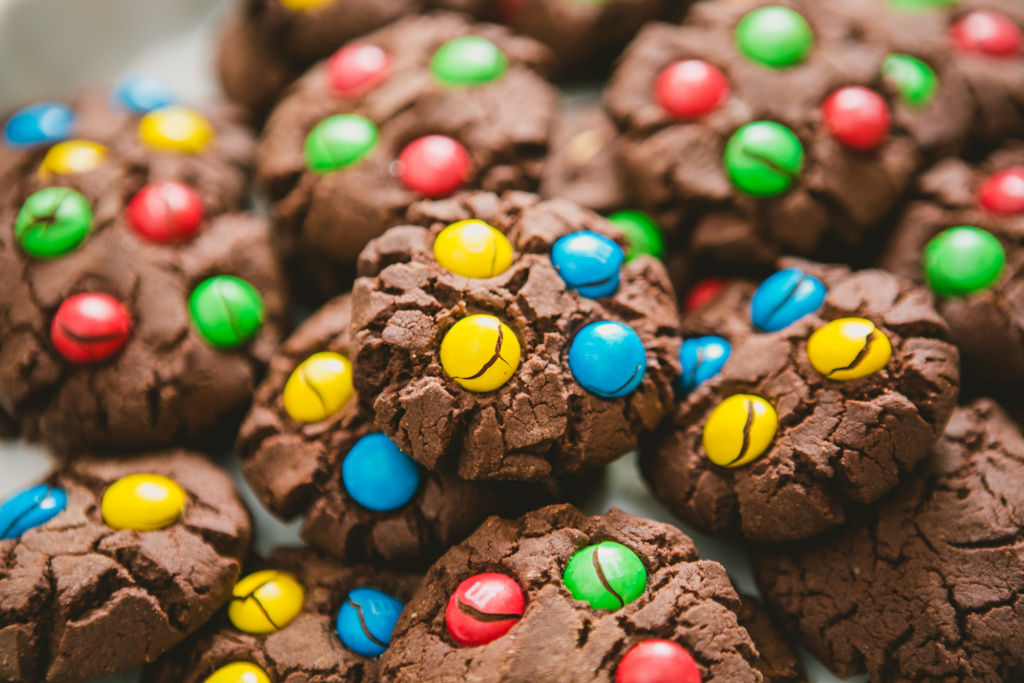Top worst nutritional supplements in America

Photo: depositphotos.com
Do you remember the Incredible Hulk and the monster of Frankenstein? They are sufficient evidence that when scientists play with chemicals and the human body, things can go very badly. Of course, innovative developments, such as antibiotics or drugs for itching, are needed in modern life, but when it comes to what we eat, it is better to leave science alone and turn to Mother Nature.
Once upon a time, our food was prepared by chefs. Only a few of them were highly paid snobs, and the rest were humble mothers and grandmothers who took naturally grown grains, cuts of meat, vegetables and spices and turned them into everything from spaghetti to meatballs with Thai noodles. They used the gifts of nature and created miracles with them.
Today, our packaged and fast food is prepared not by cooks, but by scientists. The more additives they come up with - for example, emulsifiers, thanks to which ice cream has a milder taste, or dyes, with which Greek yogurt looks better - we are moving further away from real food in the understanding of our ancestors. To fully understand what modern people take inward with food, you need to have a diploma in chemistry.
We all know that natural food is always better than that stuffed with additives, but some chemicals are worse than others. Because of some, we become hyperactive and gain weight, while others cause cancer and heart disease. In this material from resource experts Eat This, Not That! the most dangerous additives and the most difficult to pronounce chemicals in our food are collected. Try to avoid them in your diet - so you can lose weight and become more healthy.
The first group of nutritional supplements is the most common chemicals that (and this has been proven by scientists) adversely affect the well-being and longevity of humans. No hot dog or cookie is worth the risk of your own health.
Sodium Nitrate and Sodium Nitrite
What is it: Preservatives that are used to prevent the proliferation of bacteria and preserve the pinkish color of meat and fish.
Contained in: Some bacon, sausage, hot dogs, as well as salted, canned and packaged meat.
Example: Oscar mayer bacon
What you need to know: In some conditions, nitrite and sodium nitrate react with amino acids and form carcinogenic chemicals called nitrosamines. This reaction can be prevented by adding ascorbic acid, erythorbic acid or alpha-tocopherol.
Partially hydrogenated vegetable oil
What is it: The fat produced by introducing hydrogen gas into vegetable fats under extremely high pressure, the unintended effect of which is the creation of trans-fatty acids. Food manufacturers like this fat because of its low cost and long shelf life.
Contained in: Many margarines, confectionery, frozen foods, pastries, cookies, crackers, soups, instant foods and non-dairy creamers.
Example: Marie Callender's Lattice Apple Pie
What you need to know: Proved that trans fats contribute to the occurrence of heart disease more than saturated fats. Moreover, the arteries they clogged affect not only your heart. Decreasing blood flow can have an effect on everything from your brain to sexual function. Most healthcare organizations recommend consuming as little trans-fatty acids as possible, but the FDA rules have a loophole that allows manufacturers to add up to 0,49 of g of fat per serving, and also indicate on the packaging that they are not there. How mean!
But there is good news. Last year, the FDA finally adopted a plan requiring all manufacturers to remove partially hydrogenated fats from their products over the next three years. Unfortunately, this does not mean that you will never see trans fats again. Companies can petition the FDA to allow them to continue to use partially hydrogenated oils, despite the fact that they are not considered safe for consumption. The FDA itself says that this law has the potential to significantly reduce the number of diseases of the cardiovascular system and prevent thousands of deaths from heart attack every year. In the future, the taste of some dishes at McDonalds may change, but this is a small price to be healthier.
Fully hydrogenated vegetable oil
What is it: A very hard, wax-like fat created by incorporating as much hydrogen as possible into the carbon base of fatty molecules. To get the right consistency, food manufacturers often mix solid fat with non-hydrogenated liquid fats.
Contained in: Some baked goods, peanut butter and margarines in a box.
Example: Jif creamy peanut butter
What you need to know: In theory, fully hydrogenated oils, unlike partially hydrogenated, should contain zero trans fats. But the process of hydrogenation is not perfect, which means that small doses of trans fats will still come across.
Yellow No. 5 and Yellow No. 6
What is it: The second and third most common food colors, respectively.
Contained in: Breakfast cereals, puddings, bread, drinks, chips, cookies and seasonings.
Example: Sunny D Original
What you need to know: Several studies have confirmed that there is a link between these two dyes and problems with learning and attention in children, for example, attention deficit disorder. Norway and Sweden have already banned the use of these synthetic dyes, and in the rest of the EU countries, manufacturers using these substances in their products are required to write on the packaging: "May have a negative impact on activity and attention in children." It is known that Yellow # 5 may cause allergic reactions such as urticaria in a small percentage of the population. Also, many animal studies confirm the potential risk of tumors in the kidneys and intestines associated with these supplements. Despite the existence of such an evidence base, the FDA is not in a hurry to recognize them as risky for people. However, you yourself can avoid risk - no pudding in the world is worth it.
BHA и BHT
What is it: Bottled oxytoluene (BHT) and bottled oxyanisole (BHA) are antioxidants derived from petroleum that are used to preserve fats and oils.
Contained in: Beer, crackers, breakfast cereals, butter and food with added fat.
Example: Quaker Chewy Granola Bar Chocolate Chip
What you need to know: VNA is the more dangerous component of these two. Studies have shown that it can cause cancer in the stomachs of rats, mice, and hamsters. The US Department of Health and Human Services classifies this preservative as “reasonably considered a human carcinogen.”
Blue №1 and Blue №2

Photo: depositphotos.com
What is it: Synthetic dyes that are used alone or with other dyes to create different colors.
Contained in: The most popular blue, purple and green products, such as drinks, breakfast cereals, candy and frosting.
Example: Skittles original
What you need to know: As established animal studies, both dyes have a weak connection with cancer. The Public Interest Advocacy Center recommends avoiding them. If you like multicolored breakfasts, try discarding them in favor of colorless but healthy food.
Sodium phosphate
What is it: Food supplement made from sodium and phosphate, which is used to preserve the moisture and tenderness of meat during storage.
Contained in: Most sausages and sausages, meat products, ham and canned fish.
Example: Weaver chicken breast nuggets
What you need to know: Although phosphate must be present in what we eat, too much phosphate — especially inorganic, which is added to food — is more easily absorbed by the body. With too much phosphatase in the blood, there is a risk of heart disease. Doctors also associate this preservative with an increased level of chronic kidney disease, weak bones and premature death.
Transesterified fat
What is it: When searching for alternatives to trans fats, this type of semi-soft fat was developed, which is created by chemical mixing of fully hydrogenated and non-hydrogenated oils.
Contained in: Confectionery, margarine, frozen dinners and canned soups.
Example: Pepperidge Farm Milano Cookies
What you need to know: These fats are not very well studied, but the first results of the research are not very positive. Malaysian scientists have found that if 4% of transesterified fat is contained in the 12 weekly diet, this will increase the ratio of low-density lipoprotein cholesterol to high-density lipoprotein cholesterol, which is not very good. The study also showed an increase in blood sugar levels and a decrease in the insulin response. A more recent animal study in Brazil found that synthetic fat can harden and narrow arteries - two of the main causes of heart attacks and strokes.
The next group of nutritional supplements makes food tastier, but negatively affects the waist, and subsequently - the overall health. If you see these components in the products, it is better to abandon them.
corn syrup
What is it: Liquid sweetener and food thickener, created by allowing enzymes to break cornstarch into smaller sugars. The USDA subsidies to the corn industry make it cheap and one of the most common ingredients for food products.
Contained in: All imaginable food categories, including bread, soup, sauces, frozen dinners and frozen desserts.
Example: Kellogg's Pop-Tarts Frosted Strawberry
What you need to know: Corn syrup has no value other than calories. In moderate doses, it is not very harmful - unless it fills.
Steamed sugarcane juice
What is it: The sweetener obtained from sugar cane is a plant used to make refined table sugar. It is also known as crystallized cane juice, cane juice or cane sugar. Because it is less processed than table sugar, evaporated cane juice retains more nutrients from grassy cane sugar.
Contained in: Yoghurt, soy milk, protein bars, granola, breakfast cereals, chicken sausages and other natural or organic products.
Example: Chobani Simply 100 Strawberry Banana
What you need to know: Although more pure sugars are often used to replace normal ones in “healthy” foods, the real nutritional difference between them is very small. Do not let yourself be fooled by beautiful labels and consume more sugar than you need. If you consume too much evaporated sugar cane juice, you will gain weight and increase the amount of fat on your body in the same way if you consumed regular sugar.
Brominated vegetable oil

Photo: depositphotos.com
What is it: Anti-igniter used in rocket fuel, which, as it turned out, is also a good emulsifier for beverages. When the vegetable oil combines with bromine to create a chemical, it becomes heavy. When added to drinks, this oil prevents the separation of flavoring additives from other ingredients and their floating up the bottle.
Contained in: Lemon-flavored carbonated drinks and sports drinks.
Example: Mountain Dew
What you need to know: Brominated vegetable oil can negatively affect thyroid hormones and contribute to internal inflammation, which is associated with obesity and can make conception difficult. With excessive consumption of bromine, headaches, fatigue, loss of memory and coordination can occur.
Monosodium glutamate
What is it: Salt of amino acid glutamic acid, which is used to improve the taste of food. By itself, monosodium glutamate has almost no taste, and it is not known how it affects other foods.
Contained in: Some chili, soups, chips and chicken or beef flavors.
Example: Doritos Nacho Cheese Flavored Tortilla Chips
What you need to know: Studies have shown that monosodium glutamate causes the destruction of brain cells in mice, but the FDA believes that these results are not typical for humans. In this case, the FDA receives dozens of complaints about reactions such as nausea, headache, chest pain and weakness. It is known that monosodium glutamate makes the taste of foods richer than it increases the desire to continue to eat. Worse, it blocks the hormone responsible for satiety and gives the body a command to pump out insulin, a hormone that preserves fat. Agree, not very good news for those who want to remove their “lifeline” around the waist.
Hydrolyzed Gluten Free
What is it: A flavor enhancer created by using heat and chemicals to decompose vegetables — most often soybean corn or wheat — into its constituent amino acids. Hydrolyzed gluten enables food manufacturers to achieve a stronger taste from fewer ingredients.
Contained in: Canned soups and chili, frozen dinners, chicken and beef flavored foods.
Example: Slim jim meat sticks (under cover of hydrolyzed soy protein)
What you need to know: One of the results of protein digestion is the creation of monosodium glutamate. If monosodium glutamate appears in a product due to protein digestion, the FDA does not require it to be indicated on the package. Isn't that mean? And yes, this means that the result for your body will be the same as indicated in the paragraph above for monosodium glutamate.
Since even scientists have not decided on the next group of chemical food additives, the verdict on them has not yet been rendered. Advice from nutritionists: it is better to refrain from consumption and not to risk health.
Corn syrup, high fructose
What is it: Cheap sweetener derived from corn, which is more than 40% of all high-calorie sweeteners in the supermarket.
Contained in: In almost everything - ice cream, chips, breakfast cereals, bread, ketchup, canned fruit, yogurt, and most sugary drinks.
Example: Weight Watchers 100% Whole Wheat Bread
What you need to know: With 1980-x, the obesity rate in the US is growing in proportion to the increase in high fructose corn syrup. Today, Americans consume at least 200 calories of this sweetener per day. A study published by the Society of Endocrinologists states that adults who consumed large amounts of fructose corn syrup for only two weeks increased the level of harmful cholesterol, and with it the risk of heart disease. In 2010, Princeton University conducted a study on animals, during which it was found that consumption of fructose corn syrup entails weight gain and fat on the abdomen more than food with the same amount of sucrose (table sugar). On the other hand, however, in 2014, the magazine Nutrients published a report that nutrition with fructose corn syrup had the same effect for obesity as the sucrose diet. But the study itself was funded by the Corn Processing Association, so its results are not surprising. And what is more important: it is possible that raising fructose corn syrup to enemy rank # XXUMX against healthy nutrition is too much, but the truth is that it is not completely known how the human body will react to decades of consumption of this sweetener. It is best when possible to refuse products containing this substance, as well as limit sugar intake.
Modified Food Starch

Photo: depositphotos.com
What is it: A generic term that includes all starches (made from corn, wheat, potatoes, or rice) modified to change their response to cold and heat, improve texture, and create more efficient emulsifiers.
Contained in: Most food products that have been intensively processed, low-calorie and dietetic foods, cookies and frozen foods.
Example: Kraft easy mac
What you need to know: Starches themselves are not dangerous, but the failure to disclose which chemicals are used in their processing causes dietitians to question their health effects.
Red №3 and Red №40
What is it: Food dyes are cherry red and orange red respectively. Red №40 - the most used food coloring in America.
Contained in: Fruit cocktails, sweets, chocolate cake, breakfast cereals, beverages, sweets, cherries in liquor and fruit snacks.
Example: Tropicana Strawberry Kiwi Flavored Juice Blend
What you need to know: The FDA has already banned Red No. 3 earlier, but so far it has failed to enforce this ban. After the linkage of the dye with thyroid cancer in rats was proven, the FDA was able to remove the liquid form of Red No. 3 from external medicine and cosmetics.
aspartame
What is it: An almost zero-calorie artificial sweetener created by combining two amino acids with methanol. Aspartame, which is usually used in carbonated dietetic drinks, is 180 times as sweet as sugar.
Contained in: More than 6 000 food products, including diet soda, yogurt and sugars NutraSweet and Equal.
Example: Diet coke
What you need to know: Recently, the Dietary Advisory Committee endorsed the moderate use of aspartame. However, over the past 30 years, the FDA has received thousands of complaints from consumers about neuralgic symptoms, such as headache, dizziness, memory loss, and in rare cases, epileptic seizures. Many studies say that aspartame is generally not harmful, while others argue that a number of cancers are associated with this dietary supplement.
Caramel Dye
What is it: This dietary supplement is produced by treating sugar with ammonia, as a result of which unpleasant carcinogens can occur.
Contained in: Soft drinks, some snacks and protein bars, sweets, coffee syrups, processed snacks and baked goods.
Example: Nabisco Chips Ahoy! Original Chocolate Chip
What you need to know: R'RѕR · ·јRјRјRјRєRL.COM ° F · RoSЂRѕRІRєRo Ryo RєRѕRЅS "RμS, â €" P ‡ · RІSѓS Roes, RЅRμRѕRїR ° SЃRЅRѕ, RЅRѕ RґRѕRєR ° F · ° F RЅRѕ RІR "RoSЏRЅRoRμ SЌS,RѕR№ RґRѕR ± P ° RІRєRo RЅR ° RІRѕR · RЅRoRєRЅRѕRІRμRЅRoRμ SЂR ° RєR ° Сѓ Р¶РёРІРѕС‚РЅС ‹С…. P X XtH ерогенной РґР "СЏ Р" юдей ".
Read also on ForumDaily:
How Amazon will change Whole Foods stores
Р 'РЎРЁРђ РІ 20% детского пШтР° РЅРЁСЏ РѕР ± РЅР ° ружили СЃРІРёРЅРµС
How to save when you live in America
Overview of online stores of Russian food in the US
Do you want more important and interesting news about life in the USA and immigration to America? — support us donate! Also subscribe to our page Facebook. Select the “Priority in display” option and read us first. Also, don't forget to subscribe to our РєР ° РЅР ° Р »РІ Telegram and Instagram- there is a lot of interesting things there. And join thousands of readers ForumDaily New York — there you will find a lot of interesting and positive information about life in the metropolis.











